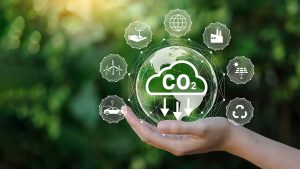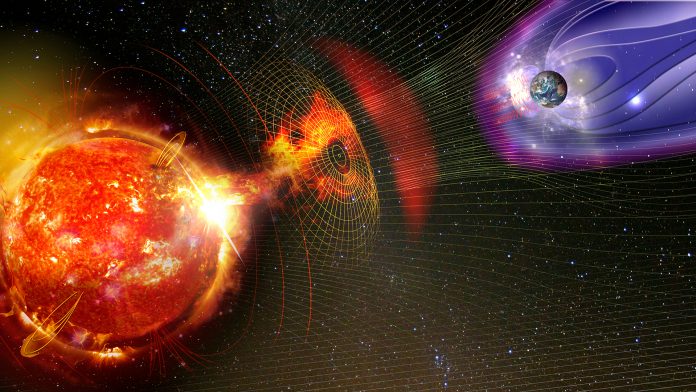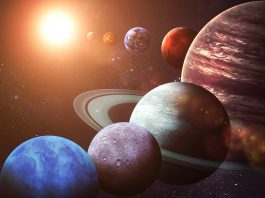Dr Thomas Shahady, Professor of Environmental Science at the University of Lynchburg, details the activities in space and their potential impact on climate change.
Ecologically, processes such as photosynthesis are driven by solar radiation. This radiation is both a source of heat and ultraviolet energy essential for life and essential ecosystem services such as air and water purification. It is widely understood that the composition of the atmosphere and, more specifically, concentrations of heat-trapping gases mediate the return of energy back into space and, if restricted, intensify heating.
Furthermore, increased warming is changing the hydrologic cycle patterns by increasing ocean evaporation and atmospheric water retention capacity. This is creating storm intensification and spatial variability in moisture delivery throughout the globe. Because temperature and moisture are the fundamental building blocks of our biomes and ecosystems, understandably each are fundamentally changing. These changes, mediated by atmospheric processes, have the potential to impact ecological integrity and the systems that sustain our life on this planet.
While conservation and environmental protection efforts have focused on terrestrial ecosystem and biome protection, it may be the atmosphere that ultimately must be protected as it contains the keys to distribute moisture and temperature. We must rethink our attitude toward the atmosphere in our conservation efforts. It not only protects us from harmful and damaging ultraviolet radiation but regulates heat and radiation powering our environment. Terrestrial life is intertwined with the atmosphere, and it needs to be part of any protection effort.
Climate-monitoring activities in low Earth orbit
To that effect, the atmosphere currently acts as a buffer or transition between activity on or near the planet’s surface (0-11km in height or the troposphere) and space activity occurring in the other layers of the atmosphere (approximately 300km to approximately 2,000km in height) in the troposphere or low Earth orbit (LEO). To put spacecraft into this orbit, a launch must use propellant emitting waste in the process. Some portions or stages of the launch may be discarded or burned as well. Once in orbit, these spacecraft are used for various designed purposes until replaced or put out of service. But when their useful life is complete, what remains are various expendable spacecraft and pieces of debris with an uncertain future. This has created an excessive amount of space debris or junk orbiting the planet without a specific management plan to remove it.
Even more concerning is a movement toward the use of mega satellite constellations that provide a cheap, effective model for global coverage. These constellations have the potential to replace many of the existing older and more expensive satellites, creating an even bigger problem of disposal for the satellites these constellations replace. In addition, the US has recently passed policy requiring satellites to be replaced every five years, assuming this would be the most effective way to reduce space debris and preserve the space environment. This policy burns non-functional satellites and associated debris in the atmosphere as the waste disposal management plan.

Reducing CO2 in the atmosphere
Currently, the U.S. Department of Defense’s global Space Surveillance Network is tracking 27,000 pieces of space debris in LEO. Additional debris too small to track also exists in this space. Many questions now plague this problem. How much debris can we put into LEO and still maintain functionality? And what is the fate of this material? What is occurring during burn-up and how does that impact the atmosphere? And how does adding CO2 and other greenhouse gases impact this process? What will occur in the future as we move through time?
The addition of CO2 into LEO will decrease the density of this layer, leading to a potential increase in the life of debris. It is hypothesised that a reduction of the atmospheric density of approximately 30% up through 400km in height would proportionately increase the life span of debris by 30%. The reduction in atmospheric density, mediated by the solar cycle, may reduce the friction for burn-up and hence the life of debris. It also lessens the protective function from natural debris such as meteoroids. Slowing the addition of burn-up gases into the atmosphere while increasing the potential of more natural debris hitting the Earth’s surface exacerbates existing problems.
Our current strategy of burning satellites as a means of disposal as a part of constellation operations is an ill-conceived policy. Clearly, the philosophical use of the atmosphere as a global waste incinerator should cause alarm when we incorporate the necessary role it provides for our environment. Furthermore, what chemicals, metals and otherwise climate-altering substances do these satellites bring to space and what will burn-up of the used equipment add to a system already burdened with concerning concentrations of climate-altering gases? An increasing amount of science and literature is developing, providing some answers to these concerns.
Both satellites and rocket stages are made of various metal alloys and other materials needed for launch and functionality. As these spent materials are sent back to Earth, re-entry angles and velocities are such as to maximise burn-up and aerosolise the spent material. These aerosols have both climate-changing and ozone-depleting potential. Most concerning, these materials are expected to increase from 12.8-39.8% more than what is put into the atmosphere naturally. The idea that we can launch upwards of 110,000 satellites along with the combustion by-products of launch and need for disposal every five years and not impact the atmosphere is not realistic.
As we fight to control greenhouse gas emissions from all sectors on Earth, we may be neglecting one of the larger contributors in the near future. Even more concerning is the direct application to the atmosphere and limited understanding of the consequences. A clear environmental assessment is needed now to challenge current policy and determine whether a push towards sustainability in-orbit (life extension, repairing or recycling) is necessary to reduce both space debris created and toxins released in the atmosphere in the lifecycle of our satellites and other spacecraft.
References
- Shutler, J. X. Yan, Cnossen, I. et al. Atmospheric impacts of the space industry require oversight. Geosci. 15:598-600. 2022
- Brown, M. K., Lewis, H. G., Kavanagh, A. J., & Cnossen, I. (2021). Future decreases in thermospheric neutral density in low Earth orbit due to carbon dioxide emissions. Journal of Geophysical Research: Atmospheres, 126(8)
- Cnossen, I. A realistic projection of climate change in the upper atmosphere into the 21st-century Geophysical Research Letters, 49, e2022GL100693. 2022
Dr Thomas Shahady worked in collaboration with Kristin Shahady, who is currently working on her master of space studies at The University of North Dakota, in the writing of this article.
Please note, this article will also appear in the thirteenth edition of our quarterly publication.









